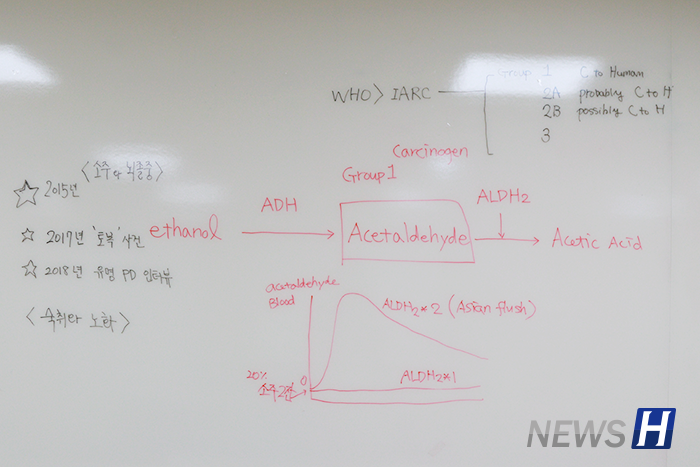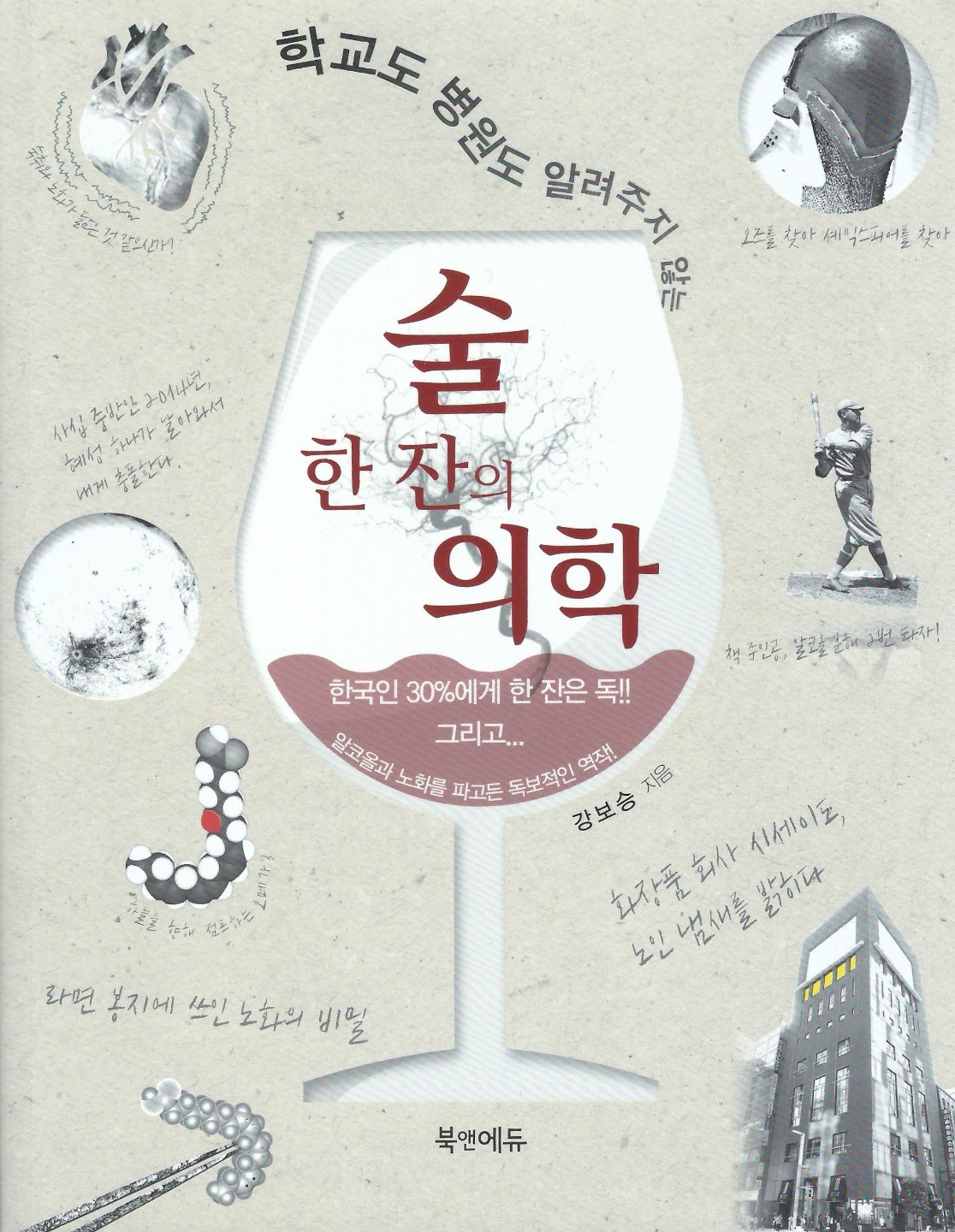Professor Kang Bo-seung writes to rectify misleading notions about alcohol


After consuming alcohol, the ethanol within the drink is partially oxidized by the liver enzyme (proteins and biological catalysts that help speed up chemical reactions in the body) alcohol dehydrogenase (ADH), which produces acetaldehyde, a type of intermediate metabolite during alcohol metabolism that can be hazardous to our bodies, said Kang. Then, it is changed into a material that is not harmful to our bodies called acetic acid by an enzyme in our bodies called aldehyde dehydrogenase (ALDH2). Behind this metabolism is the reason why Koreans and people from adjacent countries such as China and Japan have such a hard time drinking alcohol; 30 percent of the population have half or even less than half of the activity of these enzymes.
“Of the 30 percent, 3 to 4 percent have one tenth of the normal capacity to break down acetaldehyde, transformed from alcohol, and for 25 to 26 percent, they only retain 40 percent,” said Kang. On the other hand, Kang said that people of other races are more tolerable to alcoholic beverages (exactly acetaldehyde), especially those from Western cultures.
The World Health Organization’s (WHO’s) International Agency for Research on Cancer (IARC) declares acetaldehyde as “carcinogenic to humans” (acetaldehyde included in and generated endogenously from alcoholic beverages is a Group 1 human carcinogen). However, before Kang started to warn people of the possible dangers of Korean's biological compositions, a medical community in Korea was neglecting Kang's discovery. A neurology research team at 15 nationwide university hospitals in Korea claimed that small amounts of alcohol consumption lowers the risk of people having ischemic strokes (brain vessel obstruction type) in 2015. The team’s findings were published in Neurology, a biweekly peer-reviewed prestigious medical journal in the United States, which motivated Kang to send a letter to the journal to point out that the claim was only partially true. Soon, Kang's letter was published by Neurology, and Kang took further action by sending letters to reporters as the neurology research team's publication could endanger the lives of some 30 percent of the population. However, no one replied to Kang’s letters, until December 2015, when he received a letter from a reporter associated with one of Korea’s top news outlets.

(Photo courtesy of Kang)
“The reporter wrote an article titled ‘Drinking Small Amounts of Alcohol is Dangerous for 40 percent of Koreans,’ and I never expected that such a sensation would follow its publication,” said Kang. Although this ratio was revised to 30 percent after further research, the article was a turning point for Kang’s mission to spread the dangers of drinking. Soon, Kang started writing the The Medical Science Within a Cup of Alcohol to raise awareness of the possible dangers of drinking alcohol for Koreans, which took three years in the making.
Kang offered a simple test to those who wanted to know whether they had a sufficient capacity of enzymes in order to drink without having to worry about their health. “In order to test whether one has a small capacity of enzymes, one can drink 180 cubic centimeters (cc) of beer, a normal glass, and wait for 5 to 10 minutes,” said Kang. “If one’s face turns red after this time, it means that their enzyme power is weak.” Kang added that it is best for those who have a low capacity of enzymes to not drink at all.
"20 years have passed since the 21st century. I wish this becomes an opportunity for all of society to wake up," said Kang. "Schools, the health ministry, clinics or hospitals don't emphasize the importance of these findings, so I believe that these organizations should put in more effort to stress the issue. In addition, when we come across a red light, we stop, and in the same manner, when we see a person whose face is all red during drinking sessions, we should be aware that they are being attacked by carcinogens within their bodies."
Jung Myung-suk kenj3636@hanyang.ac.kr
Photos by Lee Hyeon-seon

